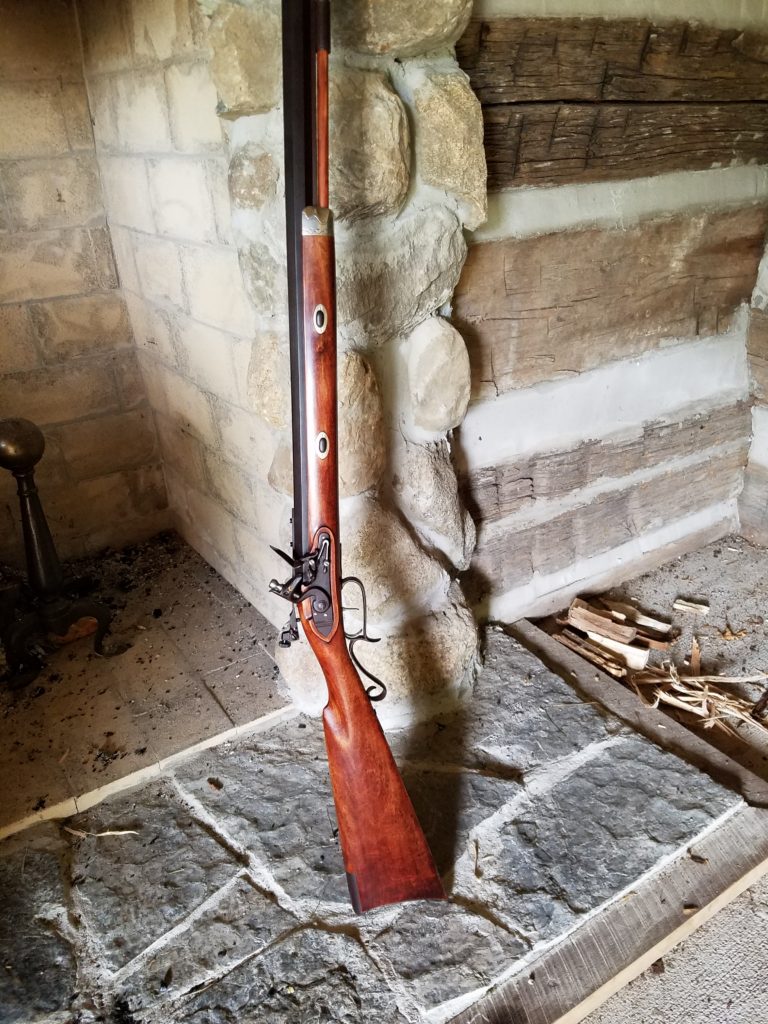
When I wrote “Flint Elk Rifle” in 2016, I explained the water test that Rick had done in Colorado. Back in Indiana Steve Chapman and I thought through a number of things we wanted to learn in our water test. Our main goal was to compare penetration and expansion of the ball. Our thinking was that with a ball as large as .58” more expansion wasn’t necessary and might limit the ability to penetrate far enough for large game.
We decided to compare a pure lead ball with an alloy ball in our test. The alloy ball was cast from melting down “hard cast (alloy 2)” pistol bullets from earlier reloading days. The result was a ball that weighed 273.5 to 274 gains. They weigh about 7 grains less than the pure lead ball, but we felt it was not enough different to worry about. I cast enough pure and alloy balls for our test.
We set up in Steve’s back yard with a shooting bench for the shooter, a bench that held 10 one gallon milk jugs full of water, and three cameras. A GoPro camera would do a video, a Canon would take stills at about five per second, and another Canon would do an HD video.
We planned to fire the pure lead ball first and recover the ball. Then we would replace the jugs and fire the alloy ball and recover it. With all cameras ready and Eric helping run the cameras, Steve fired the pure lead ball. There were no surprises here. The ball was found in the fifth jug, having destroyed the first four. We replaced the jugs and got ready to shoot the alloy ball. Our initial thoughts were that the alloy ball would penetrate more jugs than the pure lead ball and expand less. In fact we thought that the ball might deform so little that it might be reused.
The alloy ball shot surprised us. Not only did it penetrate farther than the pure lead ball, it went through all ten jugs and ended up in the woods well beyond Steve’s yard. So, we could not recover the ball to compare expansion. We did notice that the ball destroyed the first 4 jugs and then simply holed the remaining 6 jugs. We have no idea how many jugs would be necessary to stop and recover the ball.
Below are the series of stills of the alloy shot. The action occurs in the .2 second between the first two frames. Fragments of jugs and caps are in the air, and water can be seen coming out of the tenth jug. However the water eruption increases through the next stills.
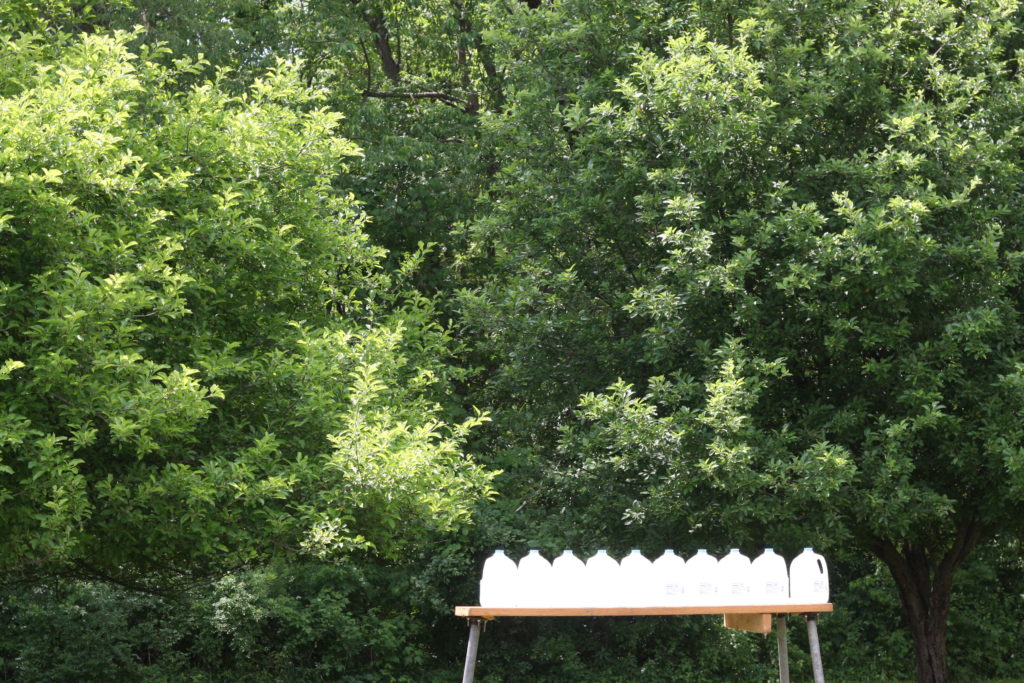
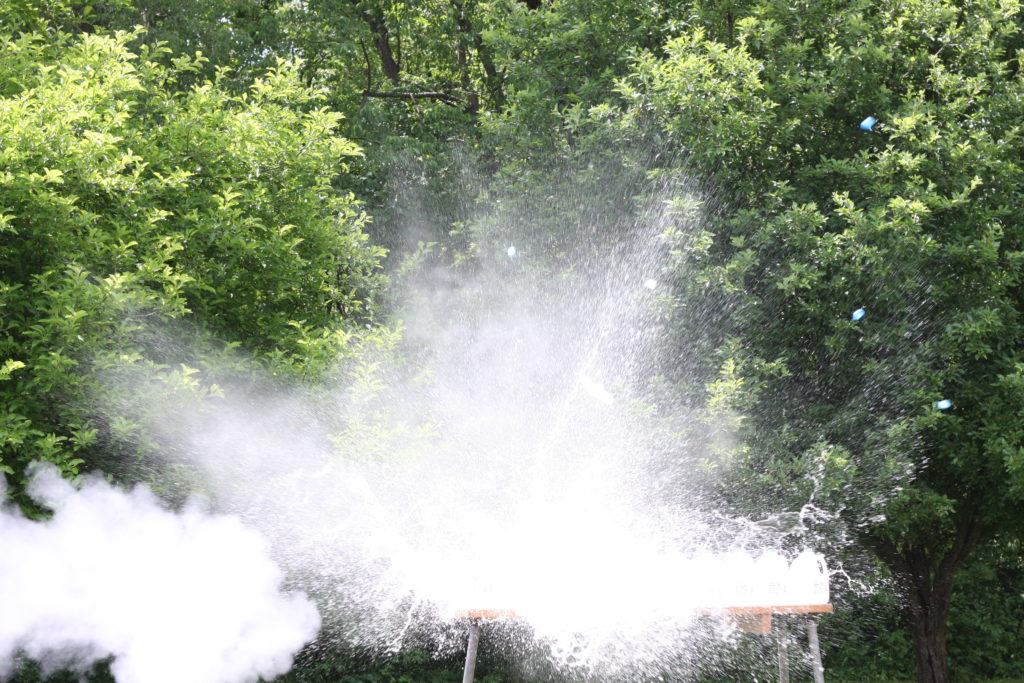
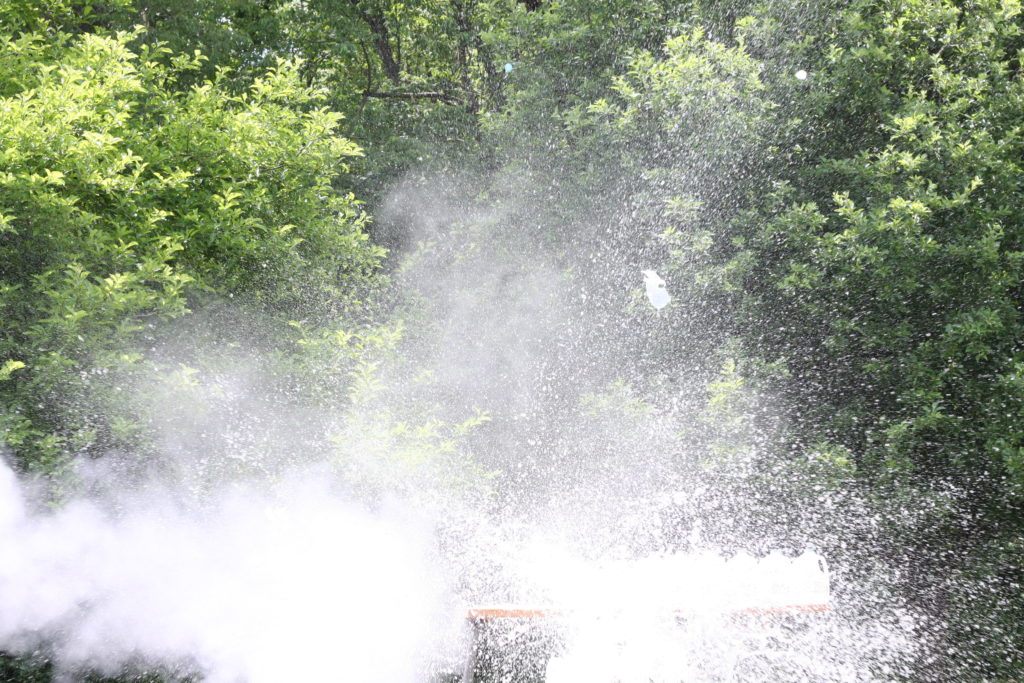
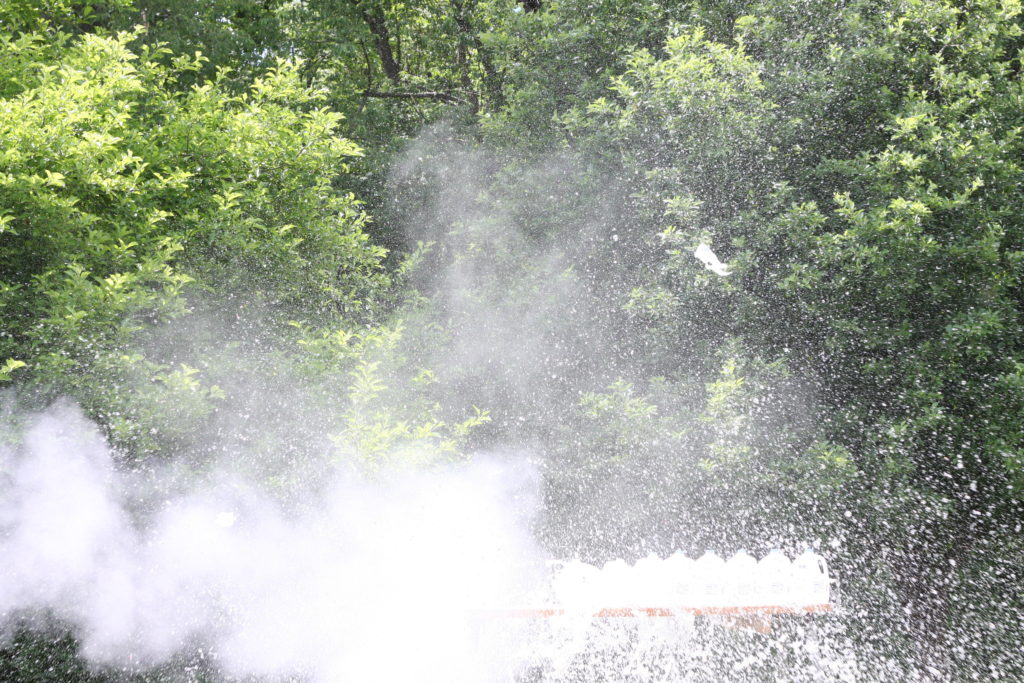
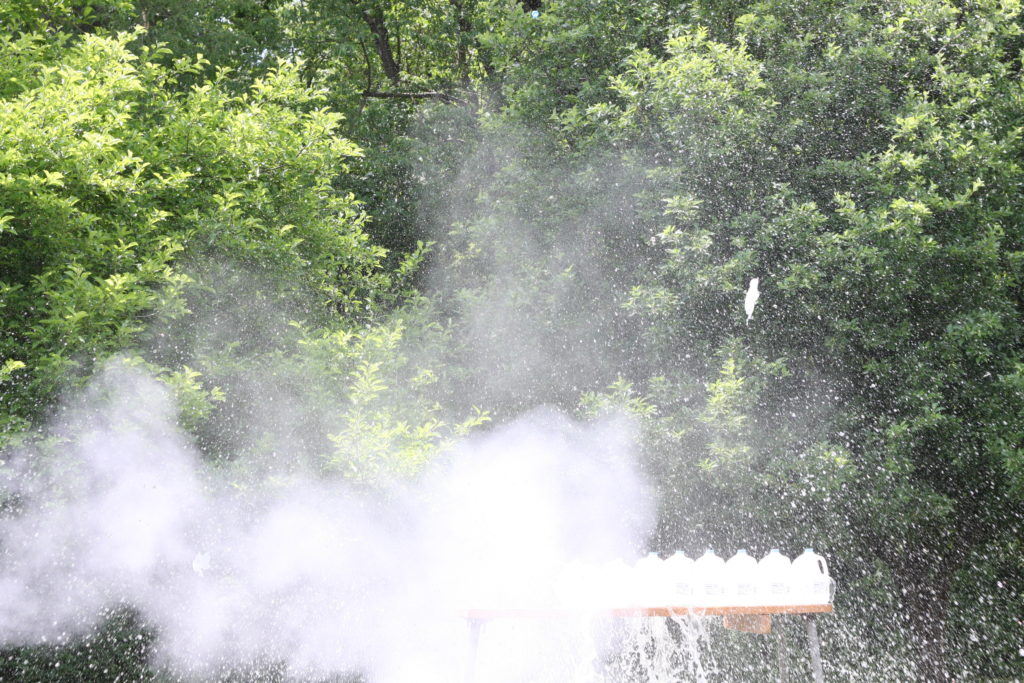
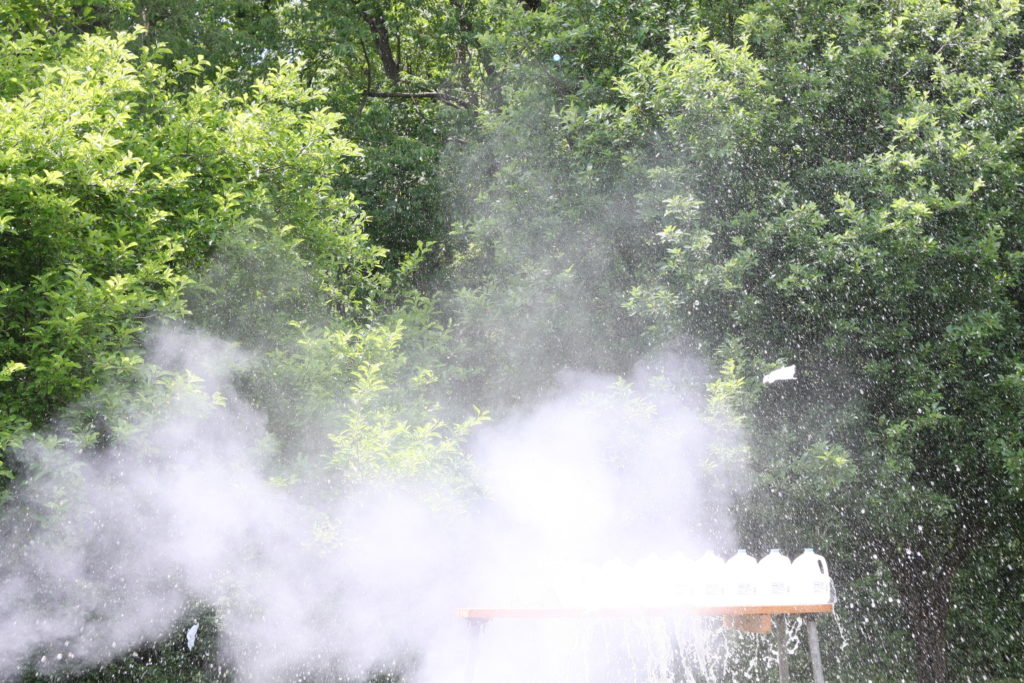
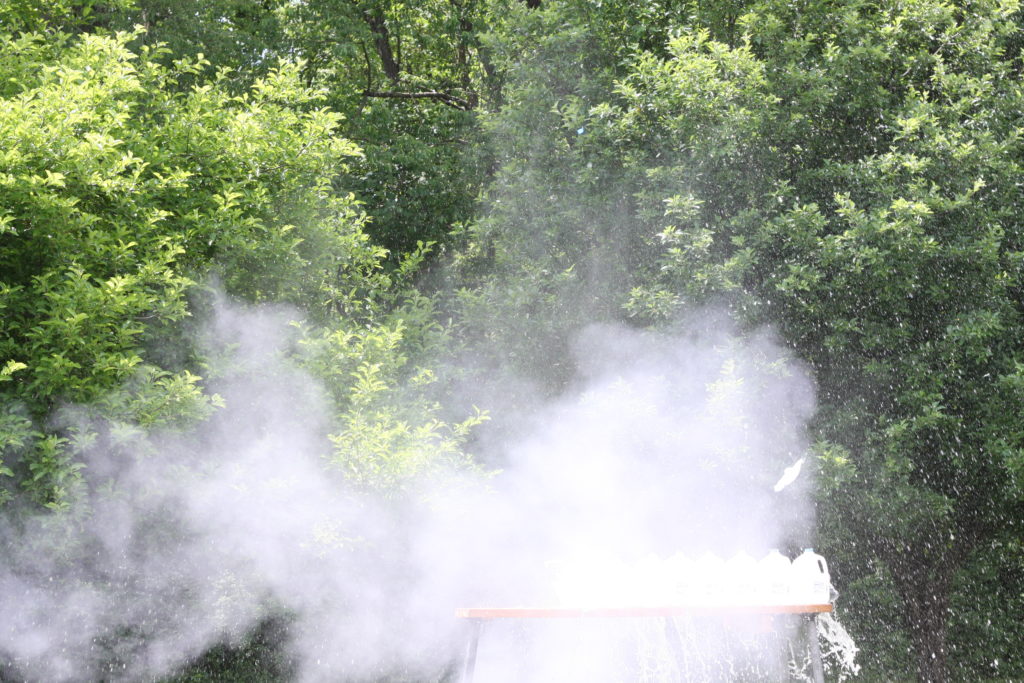
Conclusions: It’s safe to say that the alloy ball (#2 alloy) penetrated far better than the pure lead ball. The load of 90 gr. Swiss fffg was chronographed earlier at nearly 1700 fps. The alloy ball penetrated 5 more jugs than the pure lead ball, but we have no idea how many more jugs we would have needed to capture the alloy ball in a jug. Steve reported that the ball loaded as easily as the lead ball.
Neither Steve, Eric, or I have hunted elk, but we feel that this gun and the alloy ball load would be an ideal setup for elk. Note that we used primitive sights and think the sights should determine the effective range of the gun.
The following video is the #2 alloy ball fired at the 10 jugs. It destroyed the first 4 jugs and holed the next 10. We obviously could not recover this ball.
Larry Pletcher, editor

Leave a Reply
You must be logged in to post a comment.